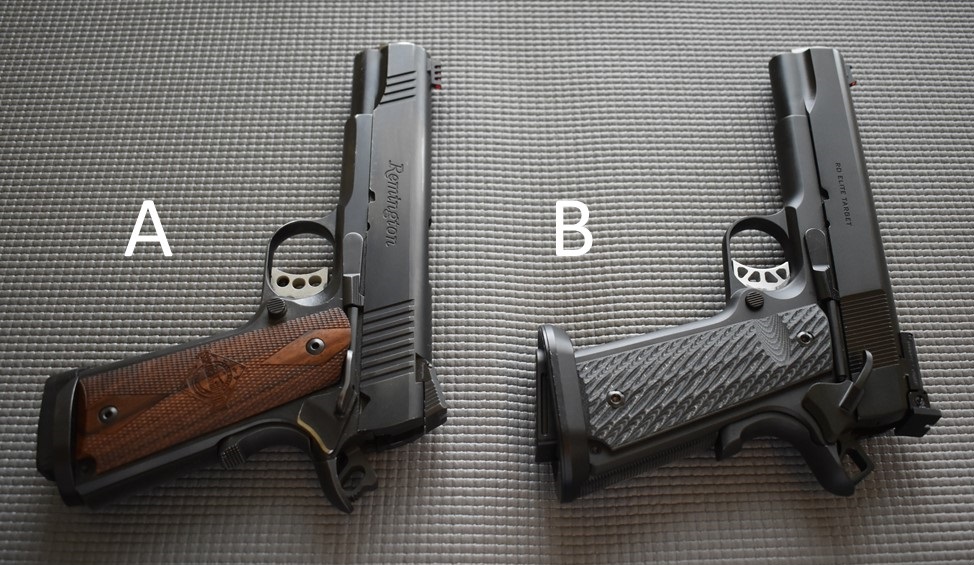While the conditions of loaded firearms placed on a table as part of the start position are clearly spelled out in the rules, we often get emails asking if the safety has to be on. As a result, we wanted to see if the confusion on this subject was really as widespread as it seemed for the January Question of the Month.
Here is the scenario and question:
The stage is a 12 round, Virginia Count, Standard Exercise with 3 USPSA targets. The start position is standing behind table with wrists above respective shoulders, firearm loaded and lying flat and unsupported on table. String 1: On audible start signal, engage all targets with only 2 rounds each, weak hand only. String 2: On audible start signal, engage all targets with only 2 rounds each, strong hand only.
The above picture shows two firearms staged for string 1. Which firearm is in the correct ready condition?

Yes, the pistol on the right (B) is the correct answer. Both Single Stack pistols are loaded with the hammer back and placed on a table prior to the start signal. The pistol on the right (B) has the thumb safety engaged. The pistol on the left (A) does not have the safety engaged. The competitor who set the left pistol down would have been disqualified as soon as he laid the gun on the table (see 10.5.11).
Okay, but the WSB didn’t say that the safety had to be engaged so why is it required? Let’s look at rule 8.1 which states the default ready conditions of firearms. These are 1911s and are single action pistols so they fall under 8.1.2.1, which says that the ready condition is “chamber loaded, hammer cocked, and the safety engaged.” That seems clear. But it was on a table, not holstered! Well, that is why we also have rule 8.5.2 which says that when a loaded firearm is placed on a surface during a course of fire, it must be in the ready conditions in section 8.1. PCCs are also considered to be single action.
But what about handguns that are not single action? Striker fired guns are easy since they have a safety integrated into the trigger and once the chamber is loaded and the striker cocked, they are ready to be set down (a few models have an additional external safety and if present, it needs to be engaged). Double action pistols have the chamber loaded and the hammer fully down or decocked. Selective action (also called double action/single action) pistols have a loaded chamber with the hammer fully down or decocked (for Production and Carry Optics) or chamber loaded, hammer cocked, and external safety engaged (Open, Limited, Limited-10) at the start signal. And let’s not forget revolvers. They also need to have the hammer down (8.1.1).
An easy way to remember the condition of a loaded firearm for a table start is that the handgun condition matches the condition for a loaded and holstered handgun and that the PCC matches the loaded condition when the PCC is held. It’s all spelled out in rule 8.1. And when in doubt, consult the rulebook!
And don’t forget to visit the blog homepage and vote in the current Question of the Month!